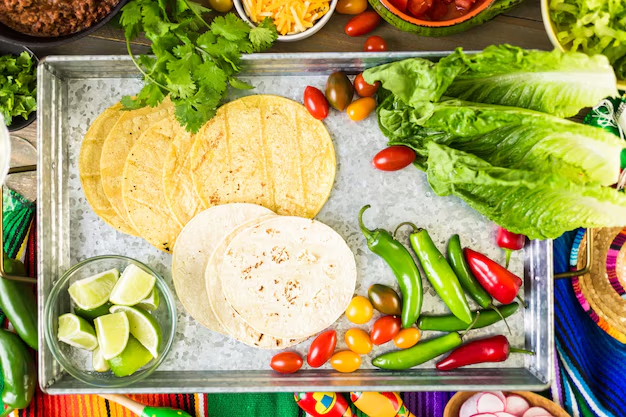How Long Does Fresh Salsa Stay Fresh in Your Fridge?
When you dip into a bowl of fresh salsa, you’re not just enjoying its bold, zesty flavors—you're indulging in a culinary tradition that adds zest to your life. But this leads to an important question: how long can you savor your fresh salsa once it’s made or purchased before it loses its prime condition? Let’s delve into the shelf life of fresh salsa, revealing how to keep it at its best for as long as possible.
Understanding Fresh Salsa
What Makes Salsa "Fresh"?
Fresh salsa, often called pico de gallo, is typically comprised of fresh chopped tomatoes, onions, cilantro, lime juice, and sometimes peppers. Unlike its jarred counterpart, fresh salsa doesn't undergo a preservation process, which means its shelf life is dependent solely on its natural ingredients and proper storage.
The Appeal of Fresh Salsa
Besides being a staple at parties and gatherings, fresh salsa boasts minimal processing and fewer preservatives, giving it a vibrant flavor and healthier profile. Its presence in dishes can enhance the overall taste without compromising nutritional value, making it a beloved choice for health-conscious individuals.
How Long Can You Keep Fresh Salsa in the Fridge?
Typical Shelf Life
Generally, fresh salsa can last about 5 to 7 days in the refrigerator when stored properly. However, the exact duration can depend on several factors like the ingredients used, how it's stored, and the temperature of your refrigerator.
Factors Affecting Fresh Salsa Longevity
- Ingredient Freshness: The freshness of your ingredients dictates the salsa's lifespan. Fresher ingredients, naturally, last longer.
- Storage Conditions: Your salsa’s environment is crucial. Keeping it in an airtight container at a consistent temperature in the fridge ensures it remains fresh.
- Ingredient Composition: If your salsa includes perishable items like avocado, its shelf life might be shorter.
Signs of Spoiled Salsa
What Should You Look For?
Even with good storage practices, fresh salsa can spoil. Here are some signs to watch out for:
- Off Smell: Fresh salsa should have a pleasant aroma. If it smells sour or off, it’s best not to take the risk.
- Mold Growth: Visible mold is a definitive indicator of spoilage and the salsa should be discarded.
- Change in Texture: A mushy or slimy texture signals that the salsa is past its prime.
- Discoloration: If the vibrant colors of your salsa seem dull or grayish, it's starting to spoil.
Keeping Your Salsa Fresher, Longer
Storage Tips for Fresh Salsa
- Use Airtight Containers: Store your salsa in an airtight container to prevent exposure to air, which can speed up spoilage.
- Consistent Fridge Temperature: Keep your refrigerator at or below 40°F (4°C) to slow down bacterial growth.
- Use Clean Utensils: Always use clean spoons or serving utensils to prevent introducing bacteria into the salsa.
- Add Acidity: Ingredients such as lime or lemon juice can act as natural preservatives due to their acidity.
Double-Saving Salsa: Freezing
You might be curious about extending the life of your salsa through freezing. While fresh salsa can be frozen, it will often undergo textural changes. The high water content of tomatoes can lead to a watery and less crunchy salsa once thawed. If you decide to freeze salsa:
- Use a Freezer-Safe Container: Ensure your container is airtight to prevent freezer burn.
- Thaw Properly: Thaw in the refrigerator rather than at room temperature for better texture retention.
Practical Tips for Salsa Lovers
Here’s a quick rundown of actionable advice for enjoying fresh salsa longer:
- 🥫 Store promptly: Place your salsa in the fridge within two hours of making or buying to minimize bacterial growth.
- 💡 Smell test: Always trust your nose; if it smells off, it probably is.
- 🍋 Boost acidity: A splash of lime can make your salsa both fresher and safer to eat.
- 🚫 Avoid cross-contamination: Never double-dip in communal salsa bowls to keep it fresh for everyone.
Exploring Delicious Variations of Salsa
Think Beyond Tomato-Based Salsas
Why limit yourself to tomato-based salsa when you can explore other variants? Here’s a look at a few that may last differently:
- Mango Salsa: Sweet and spicy, adds a fruity twist.
- Corn Salsa: A bit heartier, works incredibly as a taco accompaniment.
- Avocado Salsa: Creamy, yet perishable, like guacamole.
Making Homemade Salsa Last Longer
Homemade salsa offers an opportunity for personal flair. To make it last longer at home:
- Use Vinegar: Adding vinegar can increase acidity and extend shelf life.
- Batch Preparation: Make small batches intended for quick consumption to avoid wastage.
Conclusion: Enjoying Salsa, Fresh and Flavorful
Fresh salsa is an undeniably delightful addition to many meals, offering vibrant flavors and health benefits. By understanding the factors influencing its shelf life, looking out for signs of spoilage, and adopting best storage practices, you can keep your salsa fresh and tasty for up to a week. Whether you savor a tomato-based recipe or a creative fruit blend, the joy of fresh salsa remains in its unmistakable zest and crunch, making it totally worth the effort to store it wisely.
By following the practical guidance provided in this article, you're well-equipped to enjoy fresh salsa at its very best. Whether it's an afternoon snack or a party appetizer, you'll know exactly how to keep this popular side dish safe, delicious, and ready to serve. Whatever your salsa preference, remember, a little care in storage can go a long way in preserving this treasured accompaniment.
